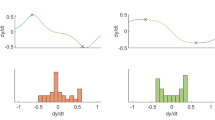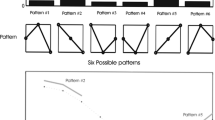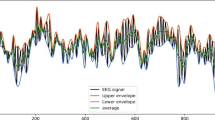Abstract
Objective.Bispectral analysis of the electroencephalogram (EEG) has been used to monitor depth of anesthesia. In the majority of publications this has been done using the so called Bispectral (BIS) Index™. The exact relation of this index to bispectral quantities like the bispectrum and its normalized version the bicoherence has not yet been published. In case the EEG is a linear random process the bicoherence is trivial. It is a mere constant independent of the EEG frequency. If the signal is a linear Gaussian random process this constant is zero. In this case both the bispectrum and bicoherence are zero. The aim of this study was to determine the proportion of EEG epochs with non-trivial bicoherence during anesthesia with isoflurane/nitrous oxide. Methods.We reanalyzed 26.4 hr of EEG signal recorded in 8 patients during anesthesia for general abdominal surgery which were stored in digitized form on CD-Rom. The test developed by Hinich for Gaussianity and linearity was applied to these data. The test was validated with various kinds of surrogate data; especially the phase randomized (pr) EEG, synthetic Gaussian random data and the z-component of the Lorenz attractor and its pr version. Results.The proportion of epochs for which a non-trivial bicoherence was detected by the test was as follows: Lorenz data 95%, pr Lorenz data 5%, synthetic Gaussian data 13.8%, pr EEG 5.4%, original EEG 6.2%. Conclusion.As expected the test procedure correctly identified for the Lorenz data for 95% of all epochs a non-trivial bicoherence. For the original EEG data we could not find a significant greater percentage of epochs with non-trivial bicoherence than for the pr data and the synthetic Gaussian data. We conclude that the EEG during anesthesia with isoflurane/alfentanil appears to be largely a linear random process.
Similar content being viewed by others
REFERENCES
Todd MM. EEGs, EEG processing, and the bispectral index. Anesthesiology 1998; 89: 815-817
Sigl JC, Chamoun NG. An introduction to bispectral analysis for the electroencephalogram. J Clin Monit 1994; 10: 392-404
Marek M, I S. Chaotic Behaviour of deterministic dissipative systems. Cambridge, Cambridge University Press 1991
Pritchard WS, Duke DW. Measuring chaos in the brain: A tutorial review of nonlinear dynamical EEG analysis. Int J Neurosci 1992; 67: 31-80
Roschke J. Strange attractors, chaotic behavior and informational aspects of sleep EEG data. Neuropsychobiology 1992; 25: 172-176
Jeong J, Kim SY, Han SH. Non-linear dynamical analysis of the EEG in Alzheimer's disease with optimal embedding dimension. Electroencephalogr Clin Neurophysiol 1998; 106: 220-228
Pijn JP, Velis DN, van der Heyden MJ, DeGoede J, van Veelen CW, Lopes da Silva FH. Nonlinear dynamics of epileptic seizures on basis of intracranial EEG recordings. Brain Topogr 1997; 9: 249-270
Bendat Julius S PAG. Random data: Analysis and measurement procedures. John Wiley & Son, Inc. 1971
Gantert C, Honerkamp J, Timmer J. Analyzing the dynamics of hand tremor time series. Biol Cybern 1992; 66: 479-484
Rao T, Gabr M. A test for linearity of stationary time series. Journal of Time Series Analysis 1980; 1: 479-484
Hinich M. Testing for gaussianity an linearity of a stationary time series. Journal of Time Series Analysis 1982; 3: 169-176
Theiler J, Eubank S, Longtin A, Galdrikian B, Farmer J. Testing for nonlinearity in time series: The method of surrogate data. Physica D 1992; 58: 77-94
Grassberger P, Procaccia I. Measuring the strangeness of strange attractors. Physica D 1983; 9: 189-208
Glass L, Kaplan D, Lewis J. Tests for deterministics in real and model neutral networks, nonlinear dynamical analysis of the EEG. In: Jansen BH, Brand ME, eds., Singapore, World Scientific 1993: 233-249
Silva F. EEG analysis: Theory and practice. In: Niedermeyer, E, Silva Fld, eds., Electroencephaolgraphy. Basic Principles, Clinical Applications and Related Fields, 2nd ed. Baltimore-Munich, Urban & Schwarzenberg 1987: 871-897
Dummermuth G, Huber P, Kleiner B, Gasser T. Analysis of the interrelation between ferquency bands of the EEG by means of the bispectrum. A preliminary study. Electroencephalography and Clinical Neurophysiology 1971; 31: 137-148
Barnett T, Johnson L, Naitoh P, Hicks N, Nute C. Bispectrum analysis of electroencephalogram signals during waking and sleeping. Science 1971; 172: 401-402
Stam C, Suffczynski P, Lopes da Silva F. Dynamics of the human alpha rhythm: Evidence for non-linearity? Clinical Neurophysiology 1999; 110: 1801-1813
Ning T, Bronzino J. Bispectral analysis of the rat EEG during various vigilance states. IEEE Trans Biomed Eng 1989; 36: 497-499
Ihmsen H, Tzabazis A, Schywalsky M, Schwilden H. Propofol in rats: Testing for nonlinear pharmacokinetics and modelling acute tolerance to EEG effects. Eur J Anaesthesiol 2002; 19: 177-188
Pritchard W, Stam C. Nonlinearity in human resting, eyes-closed EEG: An in-depth study. Acta Neurobiol Exp 2000; 60: 109-121
Creutzfeld O, Houchin J. Neuronal basis of EEG waves, handbook of electroencephalography and clinical neurophysiology. Amsterdam, Elsevier 1974: 5-55
Sokal Robert R RFJ. Biometry. San Francisco, W.H. Freeman and Company 1981.
Author information
Authors and Affiliations
Rights and permissions
About this article
Cite this article
Schwilden, H., Jeleazcov, C. Does the EEG During Isoflurane/Alfentanil Anesthesia Differ from Linear Random Data?. J Clin Monit Comput 17, 449–457 (2002). https://doi.org/10.1023/A:1026284321451
Issue Date:
DOI: https://doi.org/10.1023/A:1026284321451




